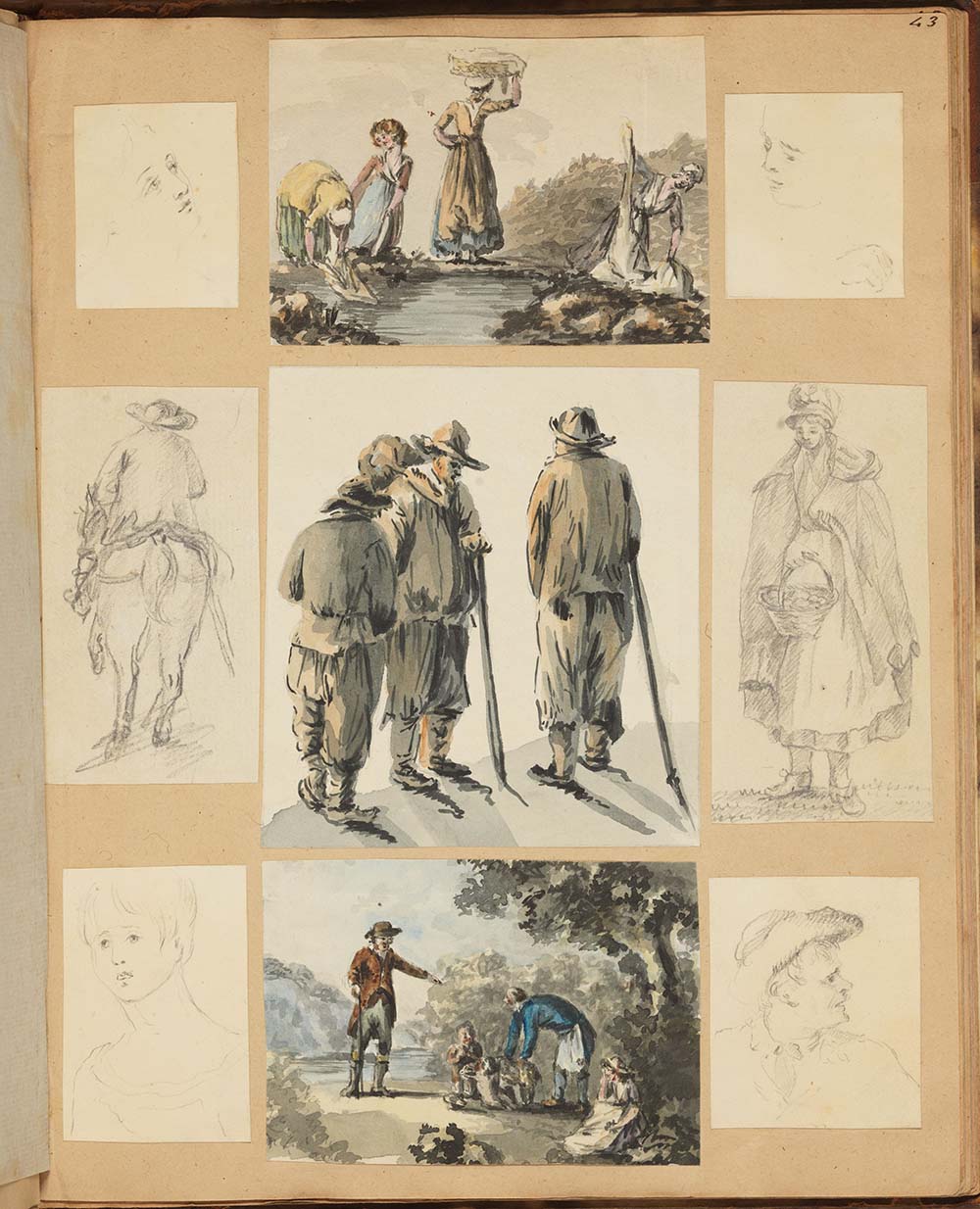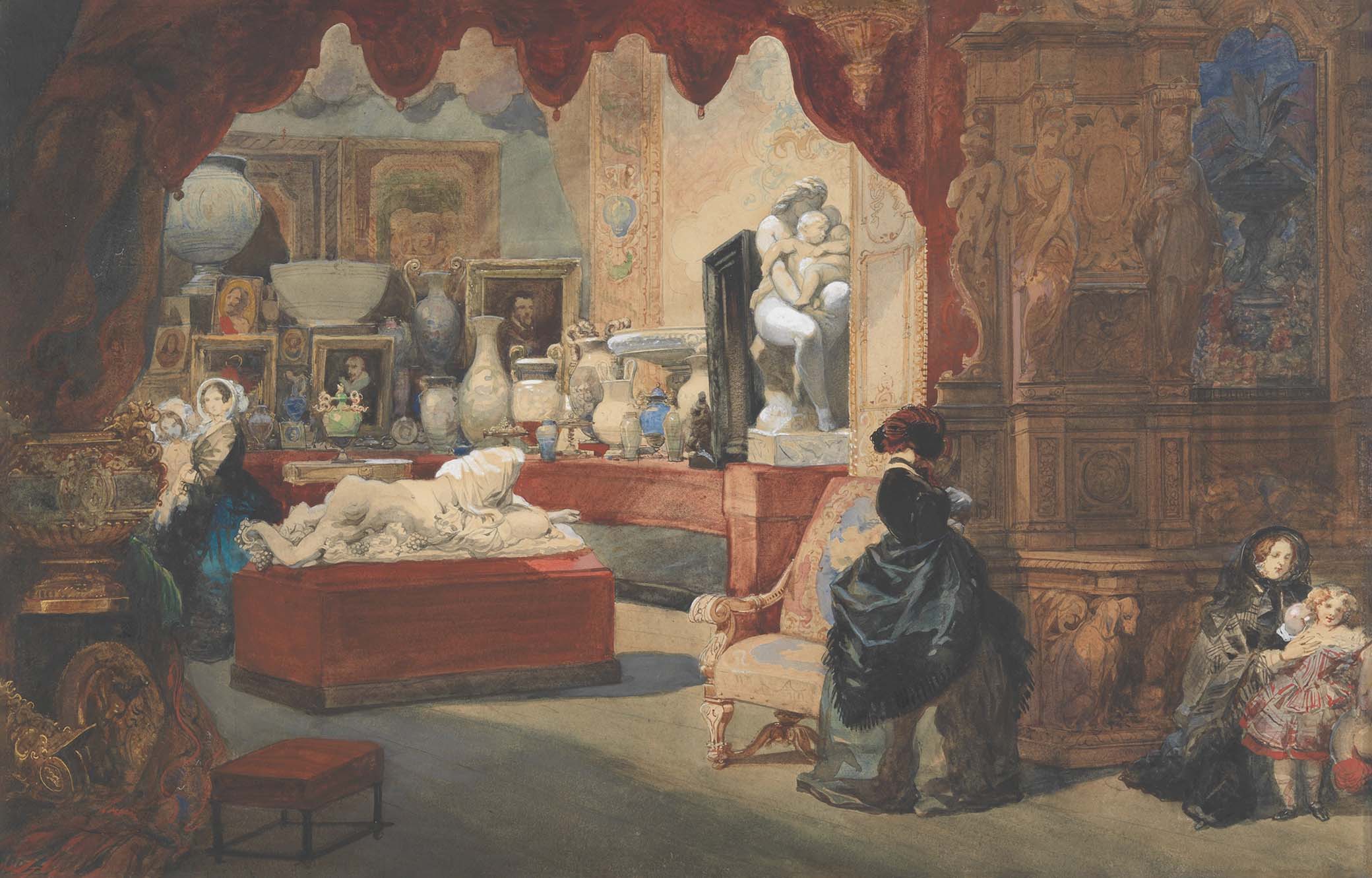When the London newspaper the Athenian Mercury, edited and published by the author and bookseller John Dunton, first answered questions about romance, bodily functions, and the mysteries of the universe in 1691, it may have created the template for the advice column. But the history of advice stretches back even further into the past. Advice—whether unsolicited, unwarranted, or desperately sought—appears in ancient philosophical treatises, medieval medical manuals, and countless books. Lapham’s Quarterly is exploring advice through the ages and into modern times in a series of readings and essays.
In her big, blended Anglo-Irish family, the writer Maria Edgeworth was largely responsible for the education of her siblings and stepsiblings. The eldest daughter of wealthy politician Richard Lovell Edgeworth and his first wife, Anna Maria Elers, Maria was five years old when her mother died in 1773. Richard would marry three more times after Anna’s death, eventually fathering twenty-two children. He pulled Maria out of school in England at the age of fifteen and brought her home to the family estate in Edgeworthstown, Ireland, to help tutor her younger siblings. It was on ten of her brothers and sisters that Maria field-tested the pedagogy she promoted in her educational treatise, Practical Education, published in 1798.
Before Practical Education, Maria had engaged with prevailing Enlightenment child-rearing practices in other works. Her first book, Letters to Literary Ladies (1795) argued for the education of women. The following year, at the age of twenty-eight, Maria published the first installment of The Parent’s Assistant, a collection of stories and moral tales written for children. Decades later, the young Queen Victoria had all six volumes of the enduringly popular series in her library, with several other works by Maria.
Maria’s father, who encouraged her literary pursuits and edited her work, contributed to Practical Education, but the bulk of the text—eighteen of twenty-five chapters—is her own work. There are chapters on the teaching of specific subjects, such as geometry or chemistry; others advise on parenting dilemmas, from how to establish a fair system of rewards to what toys to provide.
Practical Education is grounded in empiricism; it claims to contain only strategies that have been applied with success in the laboratory of the Edgeworth home classroom. The title was chosen not to suggest a pragmatic or vocational educational program, but to indicate that Maria had relied “entirely upon practice and experience” in developing her methods. “To make any progress in the art of education,” she explains in the preface, “it must be patiently reduced to an experimental science.”
Richard Edgeworth had, years earlier, followed theory rather than practice in the raising of his first child, a son born in 1764. He had read Jean-Jacques Rousseau’s recently published treatise on education, Émile, which suggested that children ought to be left to their own devices, taught by nature with minimal parental oversight. Richard, an inventor and a firm believer in the scientific method, whose friends included the botanist Erasmus Darwin, grandfather of Charles Darwin, was “determined to make a fair trial of Rousseau’s system.” But his experiment ended in failure. Having left “the body and mind” of his son, as Richard reported in his journals, “as much as possible to the education of nature and of accident,” the child was desensitized to physical hardship by the age of seven or eight but “showed an invincible dislike to control.” The feral boy grew into a rebellious teenager and was eventually turned out of the house. He ended up in North Carolina after joining the navy, dying of fever at age thirty-two.
Practical Education responds to Émile and gently corrects Richard’s mistreatment of his first child. Like Rousseau, Maria recommends individualized, age-specific teaching. However, she also insists on parental authority and firm moral guidance, chiding parents who set a poor example. For example, she warns those who effusively admire expensive coaches or military parades when their children are young that they should not be surprised if later a teenage son suddenly announces that he “had rather go into the army than go to the bar,” and a daughter shows a love for anything in “a red coat.” Maria was keenly aware of children’s tendency towards imitation. In the following selection, she considers how educators might foster good taste in their pupils, without suppressing their unique preferences.
Without being a poet or an orator, a man may have a sufficient degree of imagination to receive pleasure from the talents of others: he may be a critical judge of the respective merits of orators, poets, and artists. Mental exercise and mental amusements are essential to persons in the higher ranks of life, who would escape from the fever of dissipation or the lethargy of ennui. A nobleman of the highest birth and with the longest line of ancestry inherits no intuitive taste, nor can he purchase it from the artist, the painter, or the poet. The possession of the whole Pinelli library could not infuse the slightest portion of literature.1 Education can alone give the full power to enjoy the real advantages of fortune.
To educate the taste and the imagination, it is not necessary to surround the heir of an opulent family with masters and connoisseurs. Let him never hear the jargon of amateurs, let him learn the art not to admire. But in his earliest childhood cultivate his senses with care, that he may be able to see and hear, to feel and understand, for himself. Visible images he will rapidly collect in his memory, but these must be selected, and his first associations must not be trusted to accident.
Encourage him to observe with attention all the works of nature but show him only the best imitations of art. The first objects that he contemplates with delight will remain long associated with pleasure in his imagination. You must, therefore, be careful that these early associations accord with the decisions of those who have determined the national standard of taste. In many instances taste is governed by arbitrary and variable laws: the fashions of dress, of decoration, of manner, change from day to day. No exclusive prejudices should confine your pupil’s understanding. Let him know, as far as we know them, the general principles that govern mankind in their admiration of the sublime and beautiful, but at the same time give him the enlarged toleration of mind that comprehends the possibility of a taste different from our own. Show him, and you need not go further than the Indian screen, or the Chinese paper in your drawing room, for the illustration, that the sublime and beautiful vary in Peking, in London, on Westminster Bridge, and on the banks of the Ganges.

Let your young pupil look over a collection of gems or ancient medals: it is necessary that his eye should be accustomed to Grecian beauty and all the classic forms of grace. But do not suffer him to become a bigot, though he may be an enthusiast in his admiration of the antique. If a child sees you look at the bottom of a print for the name of the artist before you venture to pronounce upon its merits, he will follow your example and judge by the authority of others and not by his own taste. If he hears you ask: Who wrote this poem? Who built this palace? Is this a genuine antique? he will ask the same questions before he ventures to be pleased. If he hears you pronounce with emphasis that such a thing comes from Italy and therefore must be in good taste, he will take the same compendious method of decision upon the first convenient occasion. He will not trouble himself to analyze his taste or discover why one proportion or design pleases him better than another. He will content himself with repeating the words “proportion, antique, picturesque,” without annexing any precise ideas to these words.
The general principle that governs taste is the association of ideas, and this, fortunately, can be most easily illustrated: “I like such a person because her voice puts me in mind of my mother’s. I like this walk because I was very happy the last time I was here with my sister. I think green is the prettiest of all colors; my father’s room is painted green, and it is very cheerful, and I have been very happy in that room, and besides, the grass is green in spring.”
Such simple observations as these come naturally from children. They take notice of the influence of association upon their taste, though they may not extend their observations to deduce the general principle. We should not lay down for them any principle of taste as a rule which they are to take for granted. We should lead them to class their own desultory remarks and excite them to attend to their own feelings and ascertain the truth by experiments on themselves.
We have often observed that children are much entertained by comparing the unpremeditated expressions used in conversation with any general maxim. From this point of view, we may render even general maxims serviceable to children because they will excite them to experiment. Our pupils will detect their falsehood or, after sufficient reflection, acknowledge their truth.
Perhaps it may be thought that this mode of instruction will tend to improve judgment rather than taste. But every person of good taste must have also a good judgment in matters of taste. By teaching philosophy at the same time that we cultivate the pleasures of taste, we shall open to our pupils a new world; we shall give them a new sense. The pleasure of every effect will be increased by the perception of its cause; the magic of the scenery will not lose its power to charm, though we are aware of the secret of the enchantment.
1 Gian Vincenzo Pinelli was a friend and mentor of Galileo and famous for his enormous library, the greatest in sixteenth-century Italy. A 1604 inventory of his collection documented 6,428 printed works and 738 manuscripts. ↩
Read the other entries in this series: Inez Milholland and Eugen Boissevain, George Washington, Plutarch, Lewis Carroll, Chrétien de Troyes, Yan Zhitui, Nizam al-Mulk, Saadi, Giovanni Della Casa, Dan McQuade on basketball manuals, and Leopold Froehlich on syndicated advice columnists.
